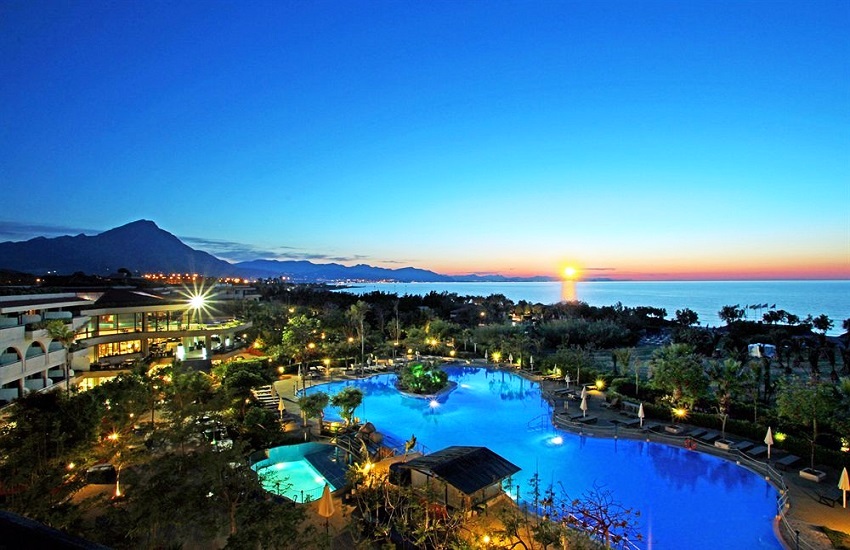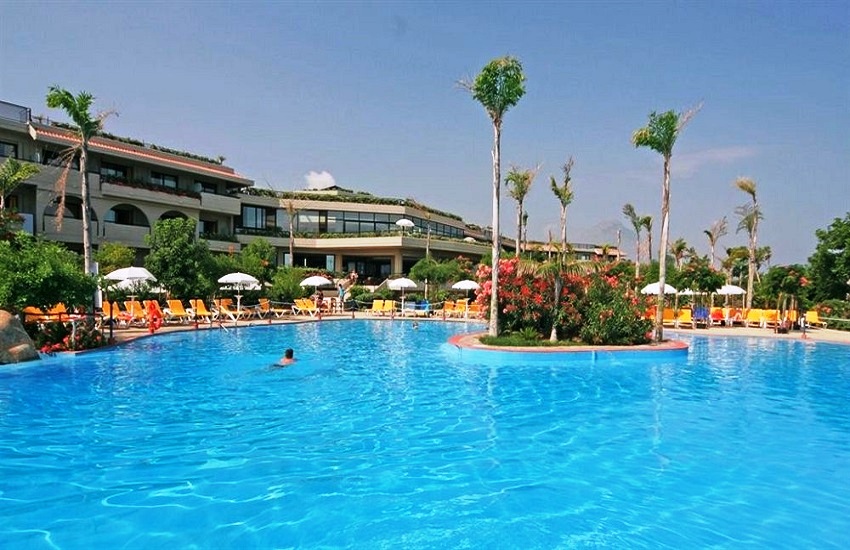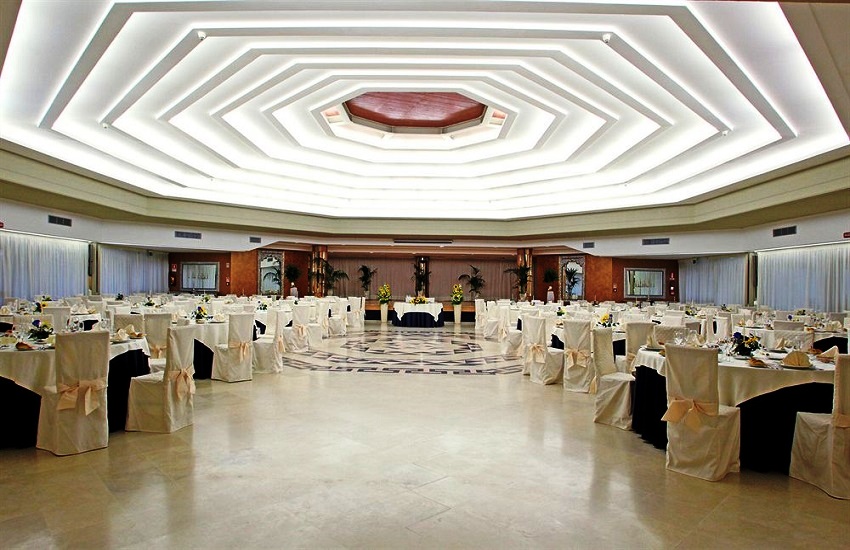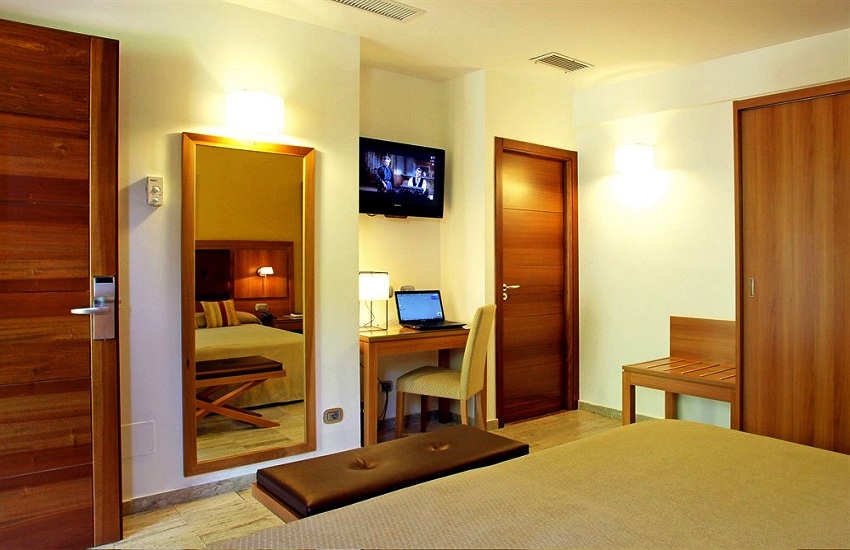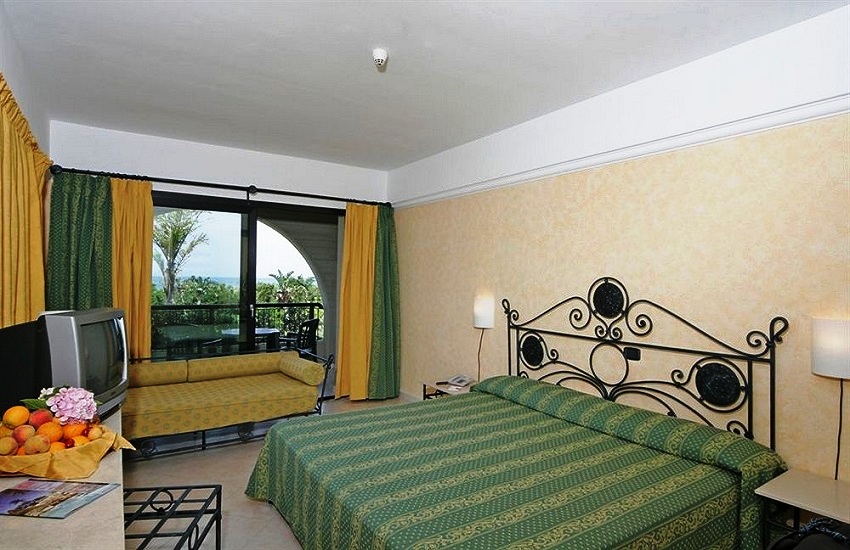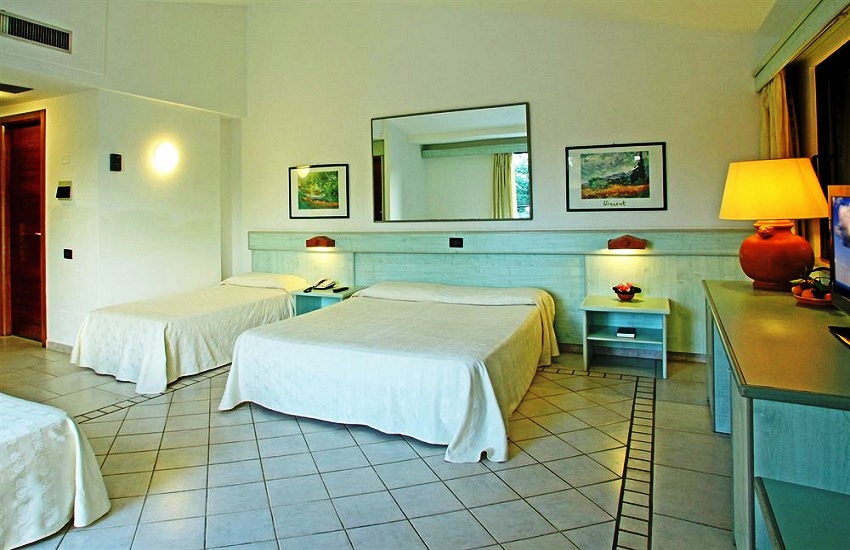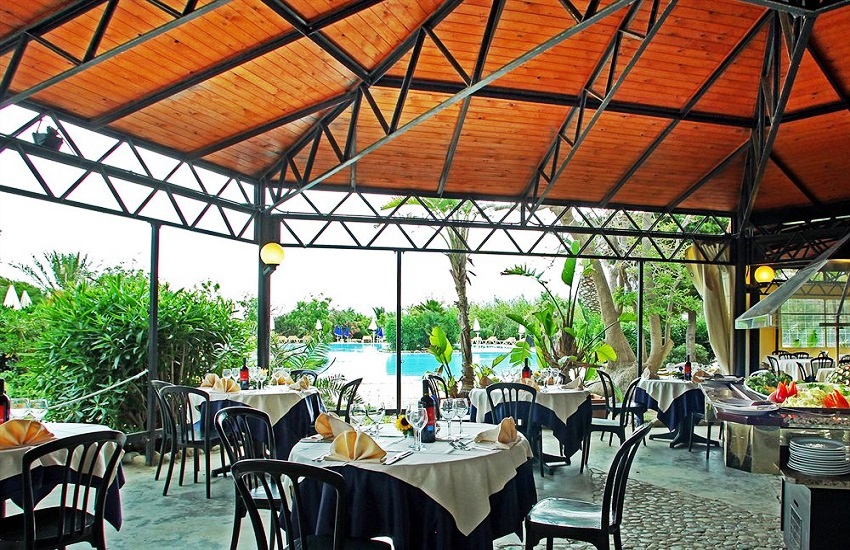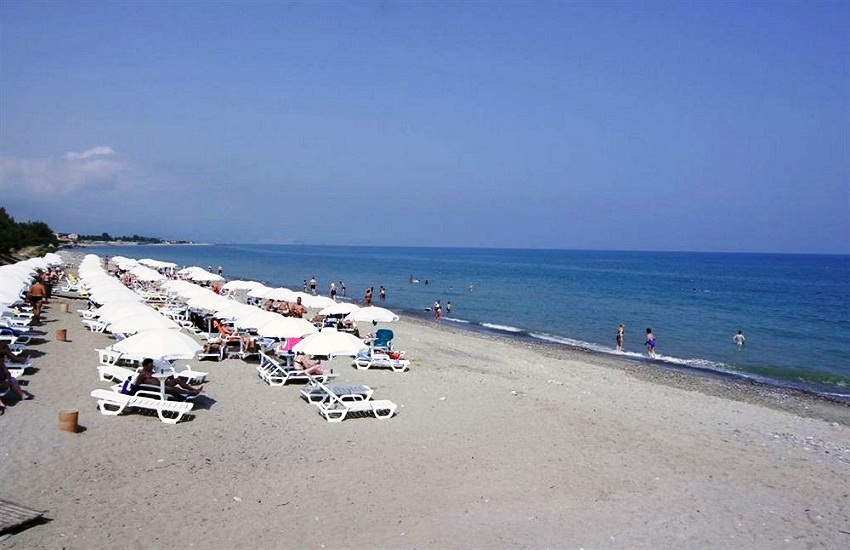General
|
Resort immersed in an oasis of lush green gardens with an exotic charm, an invitation to relax in the shade of the palm trees, between a dip in the beautiful pool and the beautiful glance of the green hills overlooking the sea Treatment: half board or full board. Position: Situated directly on the beach on the north coast of the island, about 15 Km from Cefalu and 50km from Palermo.
|
4 star Resort surrounded by lush Mediterranean vegetation, well integrated into the surrounding landscape, overlooking a long sandy and pebble beach. The ideal place to spend quiet and relaxing holidays, delighted From the friendly and professional staff who will be happy to meet your every need. The village is located in a strategic position with regard to excursions as it is located near the junction of Catania, Palermo (45 km) and Messina, and well-known resorts in the area, first of all Cefalu and the archaeological site of Himera, and just 70 km from Palermo’s airport.
Rooms It has 273 modern and comfortable rooms, of which the majority with sea views. All equipped with air conditioning, telephone, bathtub, balcony / loggia, satellite TV, mini fridge, safe (surcharge), hair dryer. On request, mini bar and laundry service (for a fee).
Restaurants with outside terrace from June to September with breakfast and dinner buffet, lunch with table service. Weekly Sicilian evening. Half board: breakfast and dinner. Possibility of All Inclusive.
Services The resort offers to its customers a lobby, bar with panoramic terrace, large multipurpose room. Three swimming pools including one near the sea with a children’s corner, a half-bath and equipped with solarium. unguarded parking. Animals are not allowed. Credit cards accepted. To pay: beverages, drinks extra, internet, laundry, boutique, bike rental, night tennis
Relax and Beauty: beauty spa hot room beauty treatments (extra).
Sandy beach and pebbles equipped with direct access with deck chairs and umbrellas until exhaustion, beach snack bar.
Card Club: It includes shared facilities with the adjoining “Fiesta Garden Beach Hotel”: piano bar, open air disco in the summer months, use of tennis courts (except lighting), soccer, volleyball, bowling, mini golf, gym, Mini Club 4/12 years from 15/04 to 15/09, use of swimming pools, animation, tennis, theater, shows in the amphitheater, tennis lessons, archery, aerobics, water aerobics and mini golf.
Additional services (extra charge) : internet point, spa, sauna, safe at the reception, individual tennis lessons, night tennis, bicycle and car rental, mattress for deck chairs, beach towels. Car rental and guided tours departing from the hotel to: Palermo Monreale – Etna Taormina – Unknown Sicily – Agrigento Valley of the Temples – Aeolian Islands – Syracuse – Piazza Armerina.
![]() Price in low season, starting from € 67 per person with half board treatment in standard room.
Price in low season, starting from € 67 per person with half board treatment in standard room.
Special offers
Early Booking discount 15% for booking up to 60 days before starting days of staying . Book in advance 10% discount for booking up to 45 days before the starting days of staying .
Additional services: Possibility to combine flights from / to place of origin and transfers in return from Palermo’sairport, or travel by boat with daily departures from Genoa, Civitavecchia and Naples to Palermo.
Palermo
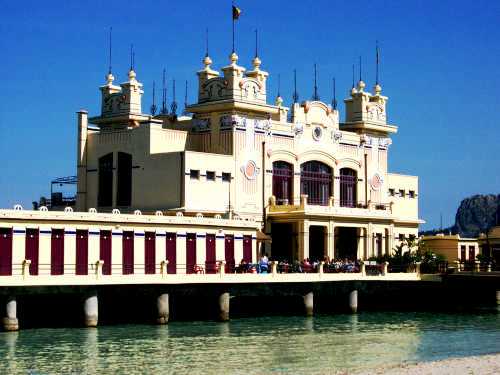
Palermo A visit to Palermo is like a journey into a time machine: Phoenicians, Byzantines, Arabs, Normans, Spanish will flow before your eyes in a city mix and valuable. The visit of Palermo provides un’obbligatoria stop at the Cathedral, built in 1145, which presents a superimposition of styles from data additions occurred over time. In fact, the main façade preserves the appearance of the XV and XVI centuries. Very impressive to visit two places of the various types: the Catacombs of the Capuchins and the picturesque market “Vucciria”. The theaters, both in the neoclassical style, the Massimo and Politeama. The historical and artistic heart of the city is represented by the neighborhoods that gravitate around the two main arteries: via Vittorio Emanuele and Via Maqueda that meet at right angles in the famous “Quattro Canti”, because of the four rounded corners of Baroque palaces that ahead, adorned with statues and fountains. Near it opens the Pretoria Square with the imposing Palazzo Senatorio or the Town Hall, also called the Palace of the Eagles, the church of St. Catherine and the magnificent fountain Pretoria, 1555, by the Florentine Francesco Camilliani. Here you can admire the Martorana church, also called St. Mary’s, Norman precious jewel, built in 1143 by Admiral George of Antioch and later altered by a baroque facade. At the entrance is a beautiful four-storey bell tower with mullioned windows and colorfully decorated in Arabic style. Martorana is located next to the church of San Cataldo, of Norman origin, built around 1160 by Admiral Majone of Bari which preserves very well the original architectural shapes with a particular frame embattled three red domes hemispherical raised on a drum of Arab flavor . Opposite is the church of St. Catherine, in a vast Dominican monastery built in 1310 and enlarged around a sixteenth century cloister. Built between 1580 and 1596, it has a late-Renaissance facade and a single nave interior. Adjacent to the Bonanno villa on a hill, it stands the Royal Palace or Palace of the Normans, who represents one of the most important monuments of the city to the historical importance – artistic. The Normans built a fortress with four towers on a pre-existing Arabic website and its once Roman and Punic. In 1130 Roger II became king of Sicily and made it his magnificent palace, enlarging and building the Palatine Chapel. It became, with Federico II, a heartland of art, culture and civilization in Europe.
Monreale The town, favorite by the Norman kings as a summer residence, is world famous for the beautiful Cathedral and the adjacent former Benedictine Monastery with the remarkable cloister of the twelfth century. The Cathedral was founded in 1174 by the Norman King William II, and is considered one of the most important monuments of the Italian Middle Ages. To visit the Civic Gallery of Modern Art Giuseppe Sciortino that guards in two rooms the most representative works of contemporary painters and sculptors, the seminar of the Clerics, Renaissance adaptation of the Norman Royal Palace, the Archbishop’s Palace, from where you can enjoy a magnificent panorama. Cefalu Land of Myth and mythical holiday, a terrace suspended between mountains and sea surrounded by the scent of jasmine in an idyllic position on the beautiful and picturesque contrast between sea and rock. Located at the foot of the Madonie, surrounded by unspoilt nature, you will find an unknown Sicily made of ancient flavors and the medieval countries. The territory of Cefalu, in addition to hill and mountain routes of the Madonie, offers great hiking and beautiful nature, as well as many scenic and natural beauty. The ancient name Kephaloidion it derives from the greek kefalè boss, referring to the rock that dominates it. The Normans left their most beautiful Cathedral, founded by King Roger in 1131, whose construction was completed in over a hundred years. Do not miss the cloister next to the church from which you can admire the sides of the complex and the apses of the Cathedral. See, also, the Bishop’s Palace in 1793, Palazzo Piraino with a sixteenth-century portal and the former monastery of St. Catherine, now the Town Hall. Shortly beyond the Piazza del Duomo is the Mandralisca Museum, which holds in its Greek and Arabic ceramic salt, ancient Sicilian coins, paintings and other works of art including vessels of Antonello’s famous “Portrait of an unknown” by the Messina 1465-70. To visit is the Fountain, located on the cliff, with interesting remains of archaic fortifications composed of large blocks of polygonal shape at the base, with the top medieval or modern remakes. For the Via Vittorio Emanuele you reach, protected by a gate, a medieval wash dug into the rock. A walk on the cliff, following Vicolo dei Saraceni, leads to the ruins of the Temple of Diana in the ninth century BC and the Medieval Castle. A few km from Cefalu, 800 meters s.l.m., amidst the lush vegetation of chestnut, oak and ash trees, stands the Sanctuary of Gibilmanna, interesting place of worship and pilgrimage.
Cefalù Land of myth and mythical holiday, a terrace suspended between mountains and sea surrounded by the scent of jasmine in an idyllic position for the beautiful and picturesque contrast between sea and rock. Located at the foot of the Madonie, surrounded by unspoilt nature, you will find an unknown Sicily made of ancient flavors and the medieval countries. The territory of Cefalu, in addition to hill and mountain routes of the Madonie, offers great hiking and beautiful nature, as well as many scenic and natural beauty. The ancient name Kephaloidion it derives from the greek kefalè boss, referring to the rock that dominates it. The Normans left their most beautiful Cathedral, founded by King Roger in 1131, whose construction was completed in over a hundred years. Do not miss the cloister next to the church from which you can admire the sides of the complex and the apses of the Cathedral. See, also, the Bishop’s Palace in 1793, Palazzo Piraino with a sixteenth-century portal and the former monastery of St. Catherine, now the Town Hall. Shortly beyond the Piazza del Duomo is the Mandralisca Museum, which holds in its Greek and Arabic ceramic salt, ancient Sicilian coins, paintings and other works of art including vessels of Antonello’s famous “Portrait of an unknown” by the Messina 1465-70. To visit is the Fountain, located on the cliff, with interesting remains of archaic fortifications composed of large blocks of polygonal shape at the base, with the top medieval or modern remakes. For the Via Vittorio Emanuele you reach, protected by a gate, a medieval wash dug into the rock. A walk on the cliff, following Vicolo dei Saraceni, leads to the ruins of the Temple of Diana in the ninth century BC and the Medieval Castle. A few km from Cefalu, 800 meters s.l.m., amidst the lush vegetation of chestnut, oak and ash trees, stands the Sanctuary of Gibilmanna, interesting place of worship and pilgrimage.
Sports and nature
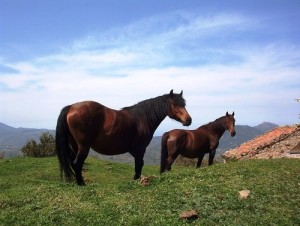 According to the Natural Park of Madonie park established in Sicily, in 1989, the nature reserve Madonie encompasses, in its 39,972 hectares, fifteen municipalities, agricultural centers of considerable importance. The landscape, in fact, is a heterogeneous set of different and unique environments. A deep valleys alternate, at the bottom of which flow streams torrential, the rugged mountains overlooking the sea, the "lace", soaring limestone hills and steep, the "cozzi" clayey origin including s' interposed numerous plains. At lower altitudes we find the typical Mediterranean vegetation with pine, heather, broom, euphorbia and strawberry trees. The vegetation Madonie varies depending on altitude: above the 800 meters, on the northern side, alternating dense forests of beech, chestnut and cork oak. In the mountainous area between the mantle of oak and beech forest meet the endemic vegetation, like the Abies Nebrodensis, juniper, mistletoe, hawthorn. As you descend meet old olive groves and, between Pollina and Castelbuono, ash and holly trees. In the southern slope, close to the sea, the mountains give way to myths and green hills, warm and sunny in the summer, dominated by pastures and wheat crops and orzo.Vero botanic paradise, the park is home to the Madonie most of the 2,600 floral species present in Sicily.
There are numerous trails and "trazzere" dirt that penetrate the vegetation, to discover the most hidden and beautiful corners, where you can enjoy the beautiful scenery of nature. After the Etna park, the reserve Madonie is the highest mountain range in Sicily, the highest peaks and spectacular are Pizzo Carbonara (1979 m.), Monte San Salvatore (1912 m.), Monte Ferro (1906 m. ) Monte Ouacella (1869 m.) and Monte dei Cervi (1656 m.). Although part of the same complex, the peaks look very different from each other: rounded or pointed, bare or covered with vegetation; draw valleys, plains, plateaus, cliffs and gently undulating backs. From the top of these peaks with sweeping views of a wide horizon, embracing beautiful landscapes: Etna, Nebrodi and the Aeolian Islands. This natural paradise also the fauna is rich and varied in numerous animal species: the park, in fact, home to foxes, weasels, porcupines and hares, owls, warblers, spotted woodpeckers, dormice, ravens and the extraordinary golden eagle. Natural setting aside, the fifteen municipalities of the reserve Madonie boast ancient origins and urban centers retain a facility mainly medieval, with a rich artistic heritage, guarded churches and palaces. In these small towns you can taste the genuine products of agriculture and livestock, such as "tuma", fresh ricotta cheese and various cheeses, handmade by the pastors of the top of the Madonie. Among the most attractive areas we recommend Castelbuono, Polizzi Generosa, Piano Battaglia, Petralia Soprana, and descending to the sea, Cefalu. The best time of year to visit the park is the spring, between March and early June, when it occurs in the flowering plant, or in autumn, when the woods and valleys are tinged with poignant colors. The climatic characteristics of the Madonie are certainly influenced by the complex orographic articulation. Therefore, despite the general characteristics are those of the Mediterranean-maritime climate along the coast are recorded normally hot summers, short winters and generally mild, with rainfall concentrated in the autumn and winter. In the inland areas, however, the winter temperatures are more rigid, while the summer remain almost unchanged. The annual average temperatures are between a minimum of 7-10 ° c and a maximum of 18-30 ° c. To those who went on the Madonie and perhaps intends to play a hike in the mountains we recommend suitable clothing, possibly "thick" (cotton T-shirt, sweater etc.), To adapt to changes in temperature, usually frequent in these areas. It should also bring a waterproof jacket in your backpack and boots comfortable and light.
According to the Natural Park of Madonie park established in Sicily, in 1989, the nature reserve Madonie encompasses, in its 39,972 hectares, fifteen municipalities, agricultural centers of considerable importance. The landscape, in fact, is a heterogeneous set of different and unique environments. A deep valleys alternate, at the bottom of which flow streams torrential, the rugged mountains overlooking the sea, the "lace", soaring limestone hills and steep, the "cozzi" clayey origin including s' interposed numerous plains. At lower altitudes we find the typical Mediterranean vegetation with pine, heather, broom, euphorbia and strawberry trees. The vegetation Madonie varies depending on altitude: above the 800 meters, on the northern side, alternating dense forests of beech, chestnut and cork oak. In the mountainous area between the mantle of oak and beech forest meet the endemic vegetation, like the Abies Nebrodensis, juniper, mistletoe, hawthorn. As you descend meet old olive groves and, between Pollina and Castelbuono, ash and holly trees. In the southern slope, close to the sea, the mountains give way to myths and green hills, warm and sunny in the summer, dominated by pastures and wheat crops and orzo.Vero botanic paradise, the park is home to the Madonie most of the 2,600 floral species present in Sicily.
There are numerous trails and "trazzere" dirt that penetrate the vegetation, to discover the most hidden and beautiful corners, where you can enjoy the beautiful scenery of nature. After the Etna park, the reserve Madonie is the highest mountain range in Sicily, the highest peaks and spectacular are Pizzo Carbonara (1979 m.), Monte San Salvatore (1912 m.), Monte Ferro (1906 m. ) Monte Ouacella (1869 m.) and Monte dei Cervi (1656 m.). Although part of the same complex, the peaks look very different from each other: rounded or pointed, bare or covered with vegetation; draw valleys, plains, plateaus, cliffs and gently undulating backs. From the top of these peaks with sweeping views of a wide horizon, embracing beautiful landscapes: Etna, Nebrodi and the Aeolian Islands. This natural paradise also the fauna is rich and varied in numerous animal species: the park, in fact, home to foxes, weasels, porcupines and hares, owls, warblers, spotted woodpeckers, dormice, ravens and the extraordinary golden eagle. Natural setting aside, the fifteen municipalities of the reserve Madonie boast ancient origins and urban centers retain a facility mainly medieval, with a rich artistic heritage, guarded churches and palaces. In these small towns you can taste the genuine products of agriculture and livestock, such as "tuma", fresh ricotta cheese and various cheeses, handmade by the pastors of the top of the Madonie. Among the most attractive areas we recommend Castelbuono, Polizzi Generosa, Piano Battaglia, Petralia Soprana, and descending to the sea, Cefalu. The best time of year to visit the park is the spring, between March and early June, when it occurs in the flowering plant, or in autumn, when the woods and valleys are tinged with poignant colors. The climatic characteristics of the Madonie are certainly influenced by the complex orographic articulation. Therefore, despite the general characteristics are those of the Mediterranean-maritime climate along the coast are recorded normally hot summers, short winters and generally mild, with rainfall concentrated in the autumn and winter. In the inland areas, however, the winter temperatures are more rigid, while the summer remain almost unchanged. The annual average temperatures are between a minimum of 7-10 ° c and a maximum of 18-30 ° c. To those who went on the Madonie and perhaps intends to play a hike in the mountains we recommend suitable clothing, possibly "thick" (cotton T-shirt, sweater etc.), To adapt to changes in temperature, usually frequent in these areas. It should also bring a waterproof jacket in your backpack and boots comfortable and light. Read more

